From Protestant Peasant Dress to Gay Pride T-Shirt: Transformations in Sartorial Strategy Amongst the körtti Movement in Finland
Abstract
:1. Introduction
2. Context and Methods of Research
3. What Is körtti?
Early Pietism in Finland had many ecstatic elements, which came to be considered undesirable towards the late 19th century and especially in the early years of the 20th century and were thus excluded from the movement (Huhta 2007). While a sense of community belonging is still a central part of the movement today, the idea of separation came to be viewed negatively after the wars and particularly when the movement liberalised from the 1960s and 1970s onwards. Therefore, although some of the members of the movement still use the word Pietism to describe their movement (and, for example, the Körtti Museum uses the word in translations), others reject the word as it does not describe well the current state of the movement. Körttiläisyys today is not a sect but a fairly freely organised movement with relatively loose theological interpretations (Salomäki 2010). Although there is a central association managing the movement, the movement itself is not organised in a centralised manner. Some körtit say that the only thing that truly binds the movement together and is recognised by all the members of the movement is their hymn book, Siionin Virret (the Hymns of Zion).(1) … religion was pietistic, stressing [the practice of piety in daily life] and ethical conduct over and above doctrinal uniqueness; (2) it was Christocentric, regarding Christ as the sole vehicle through which man could hope to comprehend the nature of the divine, and worshipping him as the Saviour whose sufferings on the Cross had atoned for sins; (3) it was emotional. Belief was matter of feeling the divine, not of understanding it. The heart, not the mind, was thought to be the seat of religious experience. … (4) It was social, defining religion as group experience in which the faithful were bound together in community of love, but at the same time separated from the rest of mankind who did not share their beliefs and who therefore were not to be numbered amongst chosen people.(Lindt-Gollin 1967, p. 92, emphasis in original)
4. A History of the körtti Dress: The Rise, Struggle and Decline of a Conservative Peasant Dress
4.1. The Time of Emergence and Sectarianism
The dress came to be a symbol and visible indicator of religious and spiritual transformation, and as such it also created symbolic boundaries, marking a difference between the ‘awakened’ and others. Such a distinction seems to have been particularly desirable as it underlined the separation between groups: an awakened körtti could not keep the company he or she kept before. It was necessary for the establishment of the movement to ensure that those who joined it would stick to it. What better means than making the boundaries visible and embodied?What, then, is the profit of change? First, that [the awakened] in one go are liberated from worldliness, and then, that they publicly part with their previous company, and finally, that they take up dress suitable for them.(in Vilkuna 1928, p. 66, my translation)
Influenced by sea trade, fashions at that time tended to spread from the west coast towards inland (Kopisto and Sihvo 1996), and Vilkuna (1928) has indeed argued that the körtti dress typically emerged in more rural, out-of-the-way places where fashion had less influence. So, in essence, the dress was a rural, conservative anti-fashion form of attire. Interestingly, the Church found this highly suspicious. Clergymen argued that wearing such ugly garments was not religiously appropriate (Huhta 2007). The grassroots character of the movement threatened Church power, and had the potential to cause unrest within it, while fashionable garments kept people peaceful and contented. In the frame of standard narratives of religious leaders and movements being hostile to fashion, the case of körtti dress shows that the opposite can be true when fashion is deemed to serve purposes of religious (and political) stability.We have put away silk and other expensive dress, which is unsuitable for the peasant estate, and have taken on such attire, which has historically been usual in the land, and which is still [worn by] our parents, and almost commonly [by] Savonia, Häme and Karelia [eastern and central Finland] inhabitants, who still have kept their craft, and have not, in madness for clothes, so deplorably spoiled their simplicity as the inhabitants of this [western] coastal land.(Independent peasant Matti Niemi, in Vilkuna 1928, pp. 63–64, my translation)
4.2. The Time of Dispersion
4.3. The Time of Integration and Nationalism
4.4. The Time of Organisation
5. ‘New’ or ‘Modern’ körtti Dress: Liberalisation, Drive for Equality and Subtle Belonging
5.1. The Time of Liberalisation
5.2. The Time of the Church in Crisis
Today, Herättäjä-Yhdistys (n.d., n.p., my translation) in their ‘körtti dictionary’ defines the role of humour in the movement like this:Humour flashes as a lightening and lifting force. Good [religious] gatherings [seurat] can be said to be fun. Humour is a relative of the Gospel, they together drive Satan away, lighten the heart, and deepen mutual understating between humans.(Herättäjä-Yhdistys n.d., n.p., my translation)
Another garment illustrates this point: körttipipa. The garment, for which the original idea was by Outi Lehtipuu, and for which the handicraft designer and journalist Hanna Tamminen created the design and made knitting instructions, is a handknitted woollen hat (Figure 10). Designed for the Tampere Herättäjäjuhlat of 2018, it communicates a number of layers of meaning, each of them more or less subtle. The name points to geographical location and local identity. ‘Pipa’ is a word in Tampere dialect, while other Finns would say ‘pipo’. A woollen hat is a traditional garment, and very necessary in the winter in Finland. The hats were handknitted by volunteers, a practice which has a long tradition within the movement. Already in the early 20th century, there were ‘sewing gatherings’ (ompeluseurat, as opposed to seurat which was and remains a purely religious gathering) in Helsinki, where women (and some men) made products to be sold for the benefit of the movement. Initially, the focus was on poor aid, but the handmade products came to be crucial for the funding of the movement more generally (Salomäki 1978). The practice survives today, albeit being arranged through Facebook groups with members in different parts of Finland, rather than as localised physical gatherings.[H]umour, self-irony and a positive outlook on life have a central role in living together. Humour between friends is not only a measure of mutual trust but is also a strengthener of trust.
Körttipipa was a great success, and particularly the ‘sorrowless’ hat proved popular, selling out very quickly, despite the higher price.A: Sorrowlessness and sorrowless people used to be spoken of. It meant those who were not mindful of their sins. [They] didn’t care where they’d spend their eternity. They could blithely [literally: without sorrow] commit sin.B: Such as wear a woollen hat with a red stripe 😊A: 😁 😁 😁
6. Conclusions
Funding
Acknowledgments
Conflicts of Interest
References
- Almila, Anna-Mari, and David Inglis. 2017. What is “Fashion” Really? The Promise of an Ecumenical Analytic for Fashion Studies and Beyond in a Globalized World. In Epistemology and Transformation of Knowledge in Global Age. Edited by Zlatan Delić. London: Intech. [Google Scholar]
- Arthur, Linda B., ed. 1999. Religion, Dress and the Body. Oxford: Berg. [Google Scholar]
- Arthur, Linda B., ed. 2000. Undressing Religion: Commitment and Conversion from a Cross-Cultural Perspective. Oxford: Berg. [Google Scholar]
- Aspers, Patrick, and Frederic Godart. 2013. Sociology of Fashion: Order and Change. Annual Review of Sociology 39: 171–92. [Google Scholar] [CrossRef]
- Barker, Eileen. 2001. A comparative exploration of dress and the presentation of self as implicit religion. In Dressed to Impress: Looking the Part. Edited by William J. F. Keenan. Oxford: Berg. [Google Scholar]
- Classen, Pamela E. 2004. The Robes of Womanhood: Dress and Authenticity among African American Methodist Women in the Nineteenth Century. Religion and American Culture 14: 39–82. [Google Scholar] [CrossRef]
- Dillon, Michele, ed. 2003. Handbook of the Sociology of Religion. Cambridge: Cambridge University Press. [Google Scholar]
- Douglas, Mary. 1984. Purity and Danger: An Analysis of the Concepts of Pollution and Taboo. London: Routledge. [Google Scholar]
- Eerola, Eeva. n.d. Körttipuku kansanpukuna. Lapua: Herättäjä-Yhdistys.
- Hakulinen, Riikka. 2008. Ei tupsuus taivahasehen mennä: Heränneiden pukeutuminen 1800-luvulla. Master’s thesis, University of Helsinki, Helsinki, Finland. [Google Scholar]
- Hawley, Jana M. 2017. The Amish Prayer Cap as a Symbol that Bounds the Community. In The Routledge International Handbook to Veils and Veiling Practices. Edited by Anna-Mari Almila and David Inglis. London: Routledge. [Google Scholar]
- Herättäjä-Yhdistys. 2018. Yhteen hiileen: Herättäjä-Yhdistys ry:n vuoden 2017 vuosikertomus ja tilinpäätös. Lapua: Herättäjä-Yhdistys. [Google Scholar]
- Herättäjä-Yhdistys. n.d. Körttisanakirja. Available online: https://www.h-y.fi/herannaisyys/korttisanakirja.html (accessed on 4 April 2019).
- Huhta, Ilkka. 2007. “Täällä on oikea Suomenkansa” Körttiläisyyden julkisuuskuva 1880–1918. Helsinki: Suomen Kirkkohistoriallinen Seura. [Google Scholar]
- Hylkilä, Satu. 2004. Körttipuku. Master’s thesis, University of Helsinki, Helsinki, Finland. [Google Scholar]
- Hyme, Lynne. 2013. The Religious Life of Dress: Global Fashion and Faith. London: Bloomsbury. [Google Scholar]
- Jensen, Jeppe Sinding. 2014. What is Religion? London: Routledge. [Google Scholar]
- Konttinen, Penna. n.d. Muistoja ja mietteita. Self-published.
- Kopisto, Sirkka, and Pirkko Sihvo. 1996. Puku Suomessa 1750–1900. Helsinki: Museovirasto. [Google Scholar]
- Lehtinen, Ildikó, and Pirkko Sihvo. 1984. Rahwaan puku. Helsinki: Museovirasto. [Google Scholar]
- Lewis, Reina. 2015. Muslim Fashion: Contemporary Style Cultures. Durham: Duke University Press. [Google Scholar]
- Lindt-Gollin, Gillian. 1967. The religious factor in social change: Max Weber and the Moravian Paradox. Archives de Sociologie des Religions 23: 91–97. [Google Scholar] [CrossRef]
- Mäntykoski, Matti. 1973. Körttipuvun käyttö ja merkitys Nurmossa 1800-luvulta nykypäiviin. Laudatur thesis, University of Helsinki, Helsinki, Finland. [Google Scholar]
- Ribeiro, Aileen. 2003. Dress and Morality. Oxford: Berg. [Google Scholar]
- Salomäki, Mauno. 1978. Herännäisliike Helsingissä 1895–1939. Laudatur thesis, University of Helsinki, Helsinki, Finland. [Google Scholar]
- Salomäki, Hanna. 2010. Herätysliikkeisiin sitoutuminen ja osallistuminen. Helsinki: Kirkon Tutkimuskeskus. [Google Scholar]
- Sulkunen, Irma. 1999. Liisa Eerikintytär ja hurmosliikkeet 1700- ja 1800-luvulla. Helsinki: Gaudeamus. [Google Scholar]
- Tarlo, Emma, and Annelies Moors, eds. 2013. Islamic Fashion and Anti-Fashion: New Perspectives from Europe and North America. London: Bloomsbury. [Google Scholar]
- Vilkuna, Kustaa. 1928. Heränneiden körttipuku. In Etelä-Pohjalaisen Osakunnan julkaisu. Kyrönmaa II. Helsinki: Sana. [Google Scholar]
- Weber, Max. 2002. The Protestant Ethic and the Spirit of Capitalism. New Translation and Introduction by Stephen Kalberg. London: Blackwell. [Google Scholar]
- Wilson, Elizabeth. 1985. Adorned in Dreams: Fashion and Modernity. London: Virago. [Google Scholar]
- Yle. 2017. Pastori vihki homoparin—Sai kirjallisen varoituksen. Yleisradio. October 3. Available online: https://yle.fi/uutiset/3-9863764 (accessed on 4 April 2019).
- Yle. 2018. Pappien suvaitsevaisuus nousussa: Enemmistö kannattaa homoparien vihkimistä. Yleisradio. October 17. Available online: https://yle.fi/uutiset/3-10462007 (accessed on 4 April 2019).
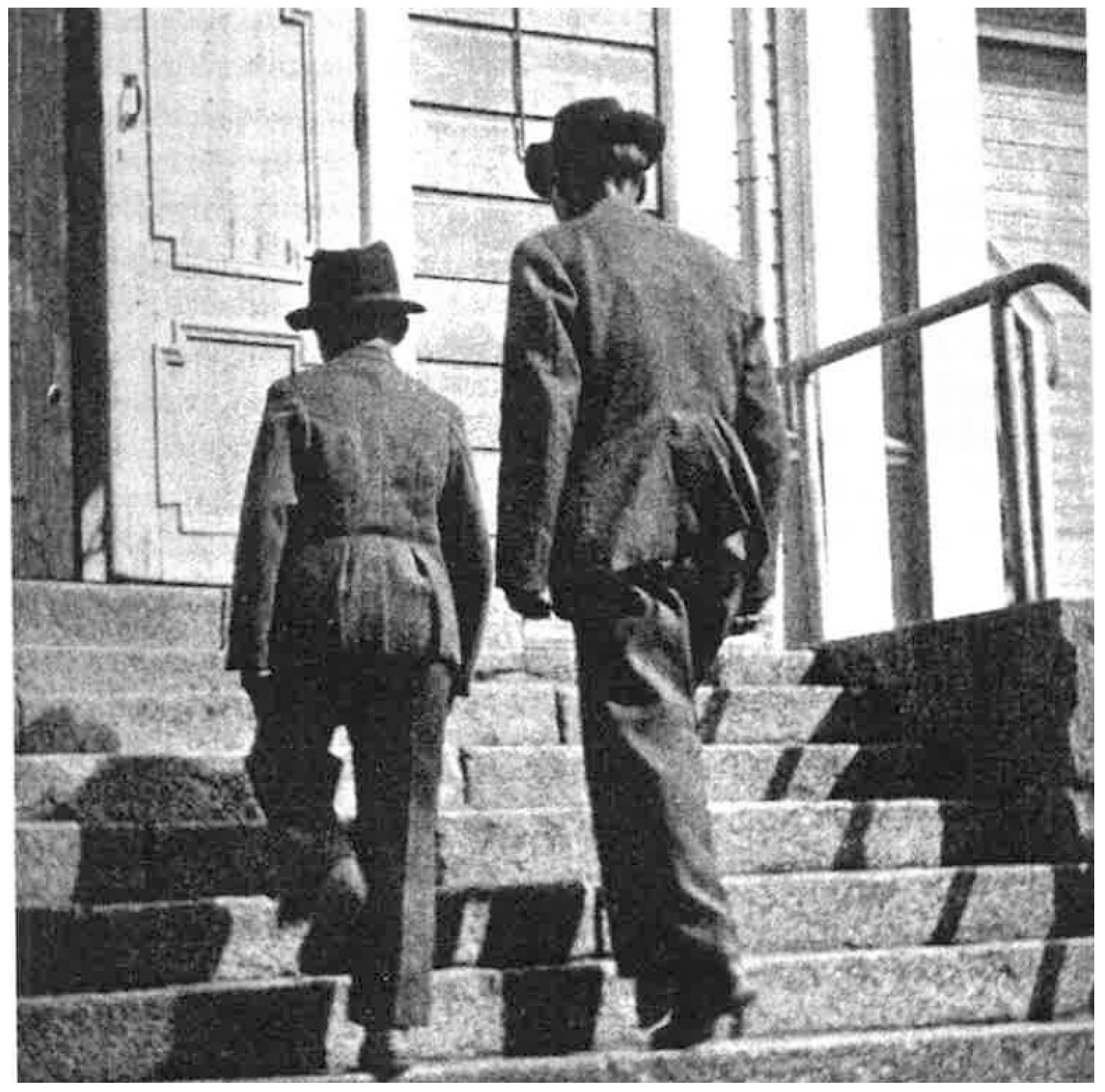
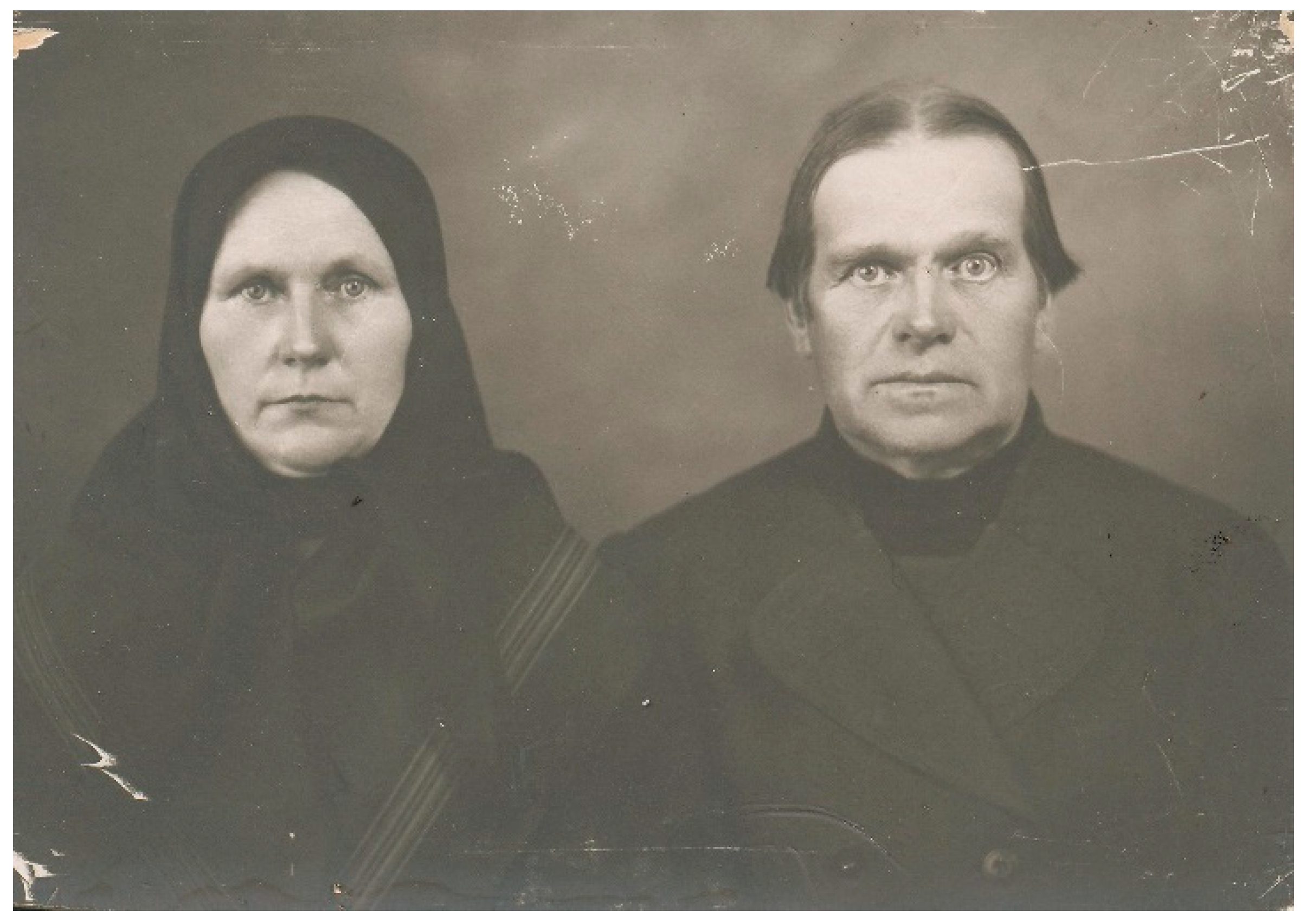
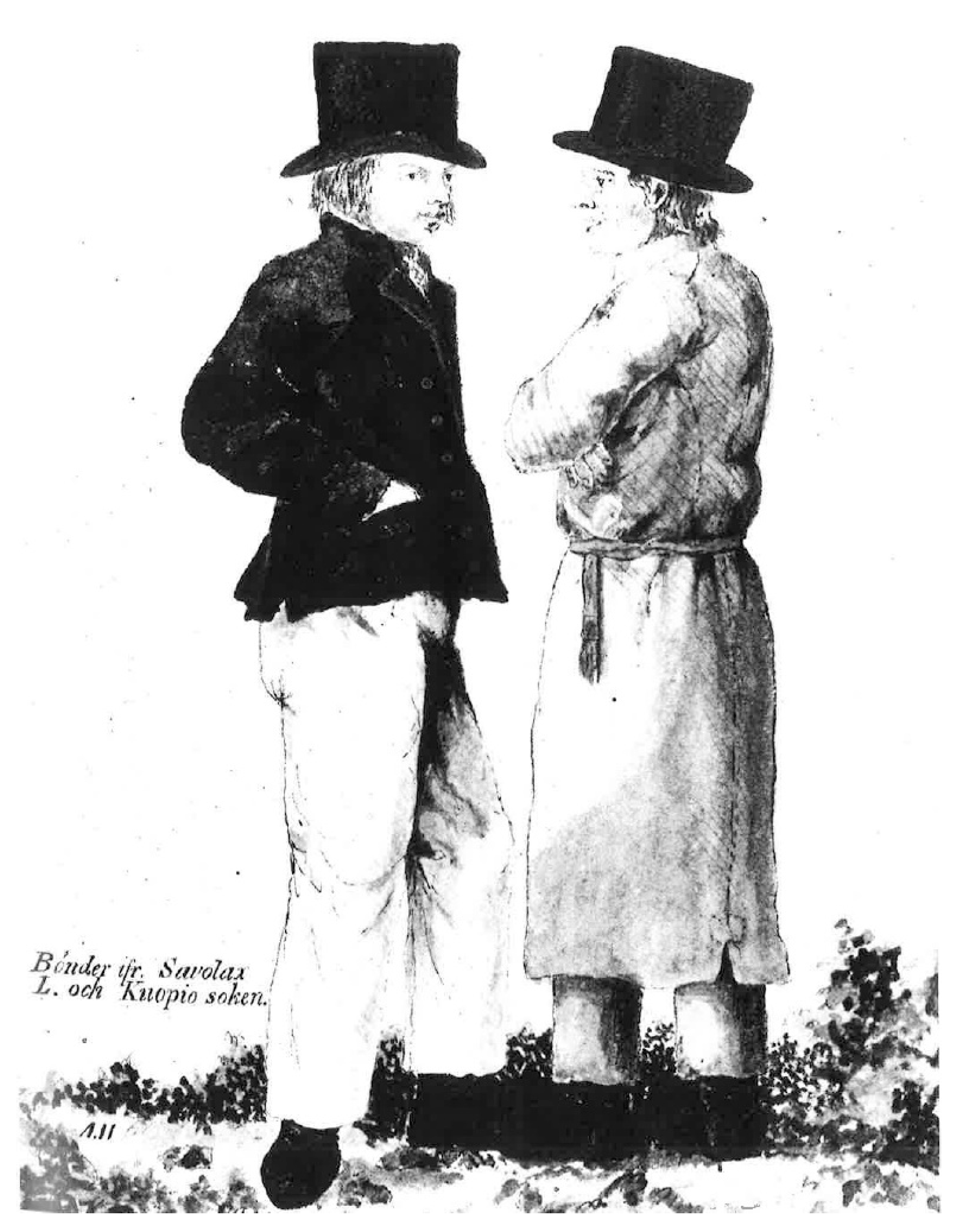
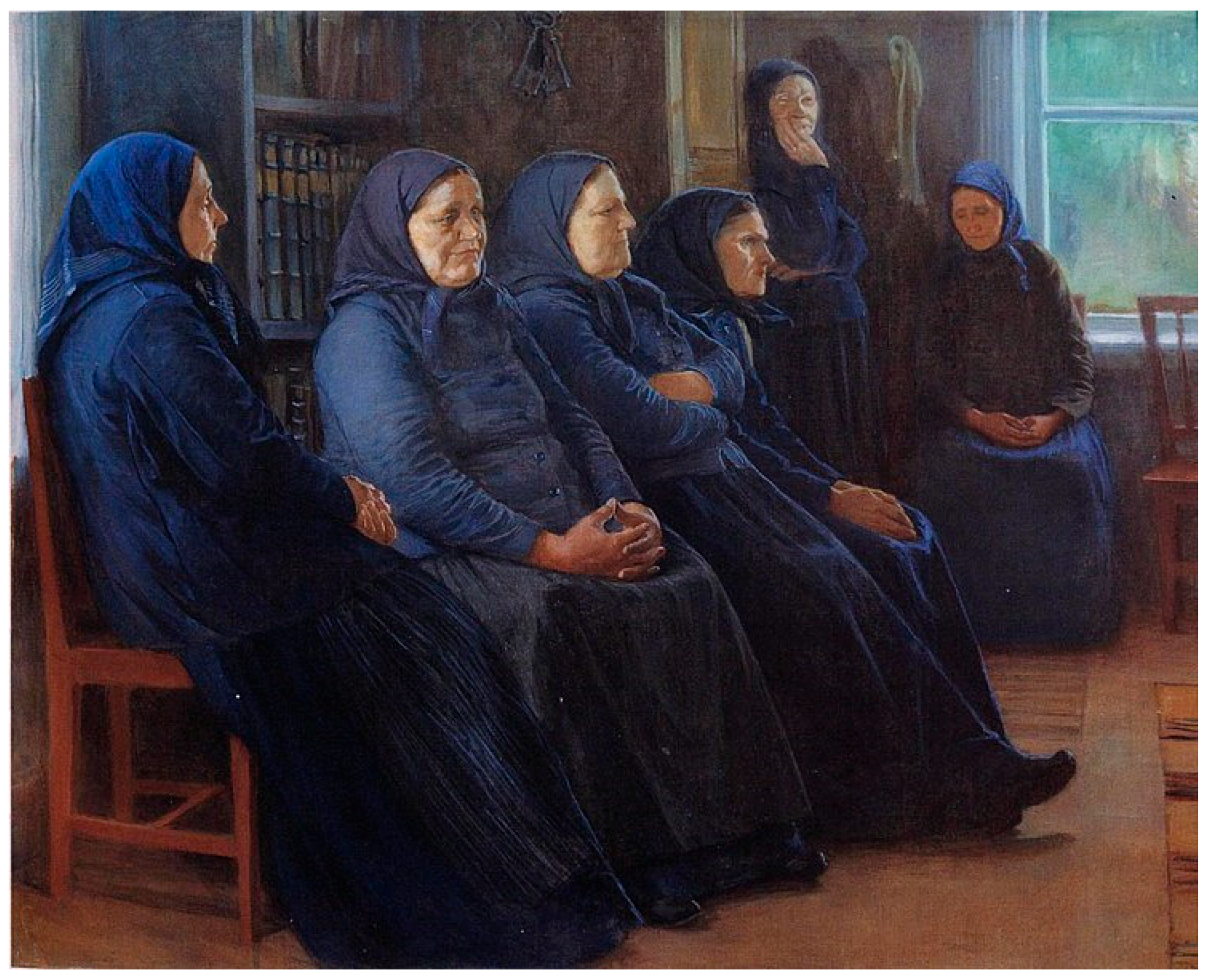
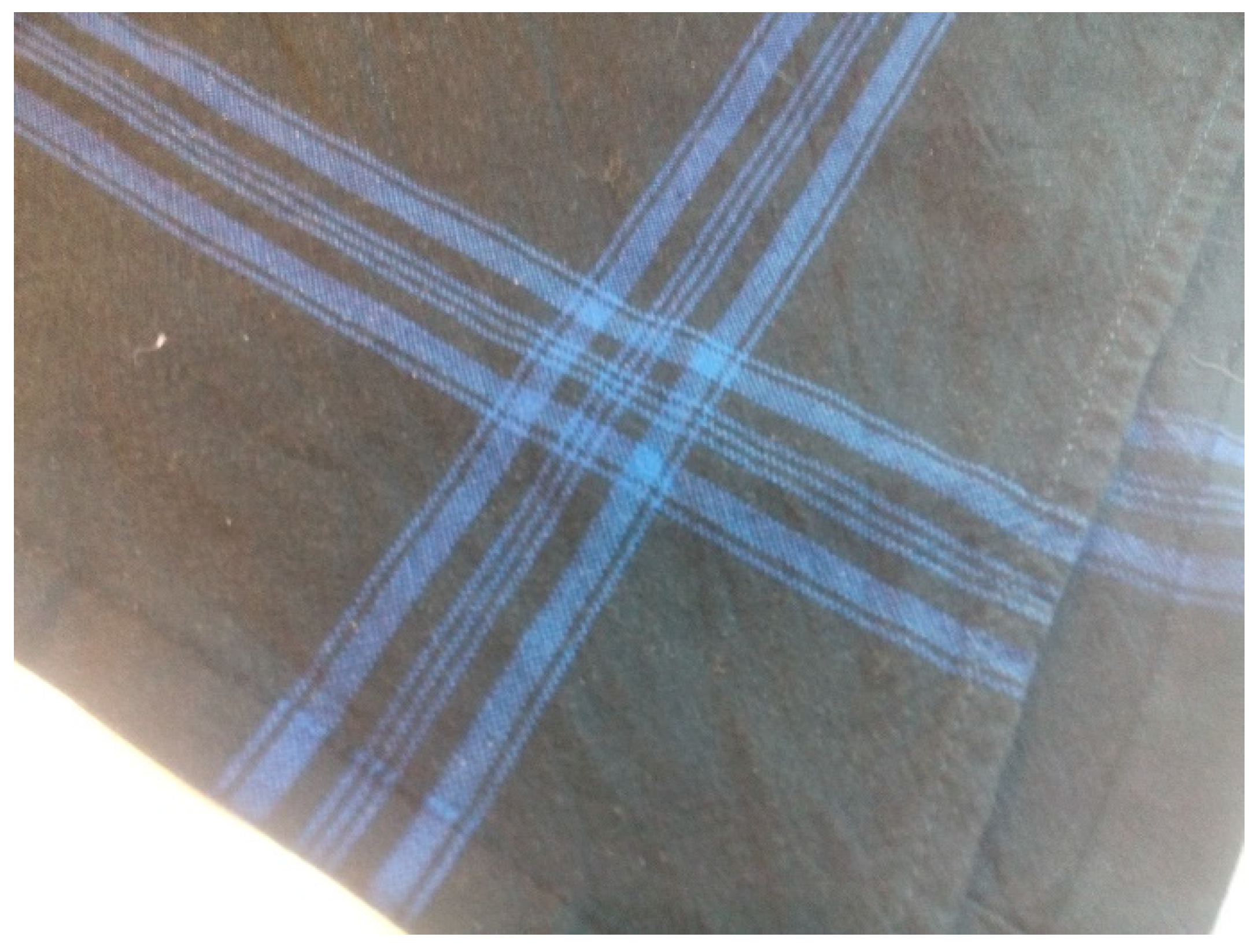

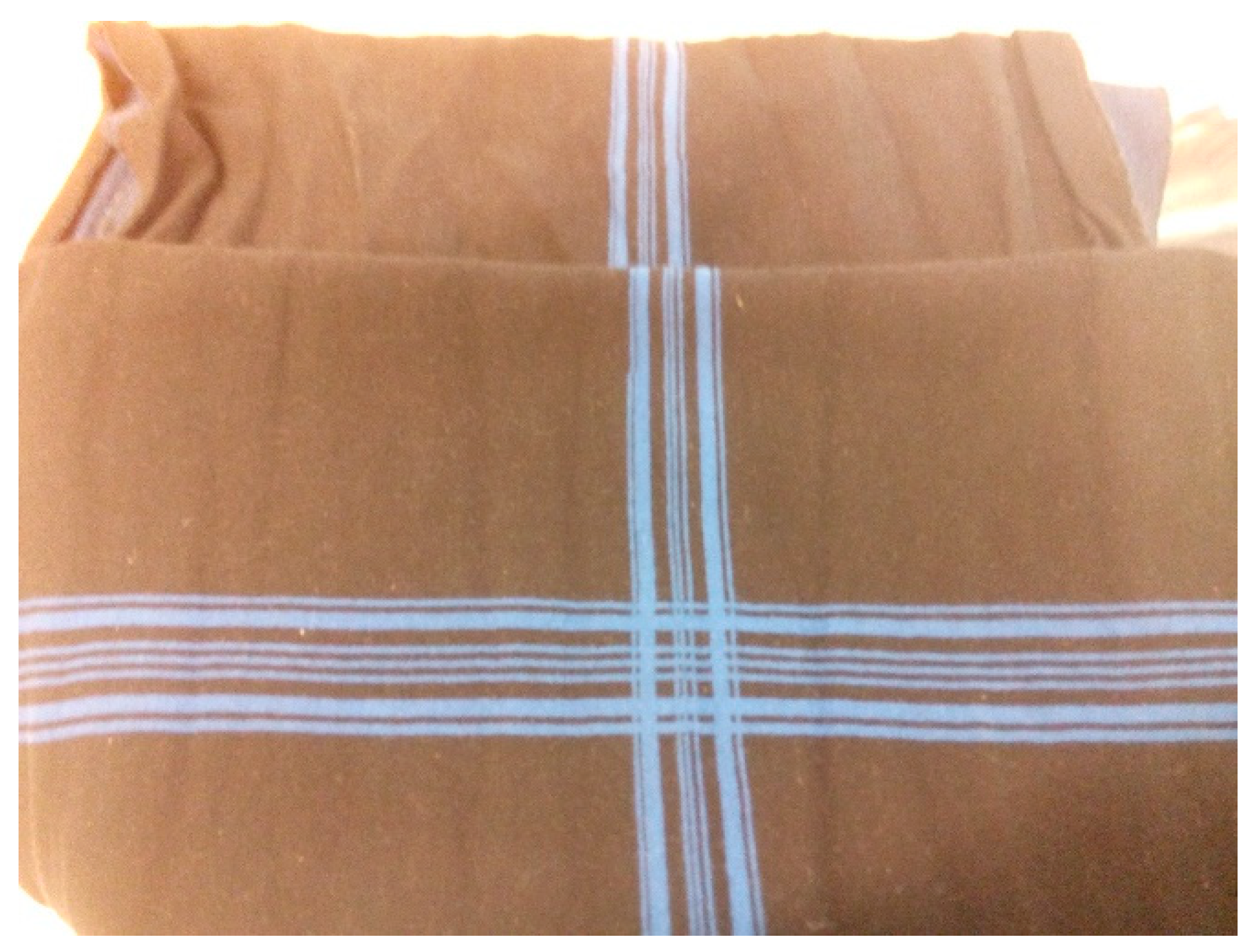
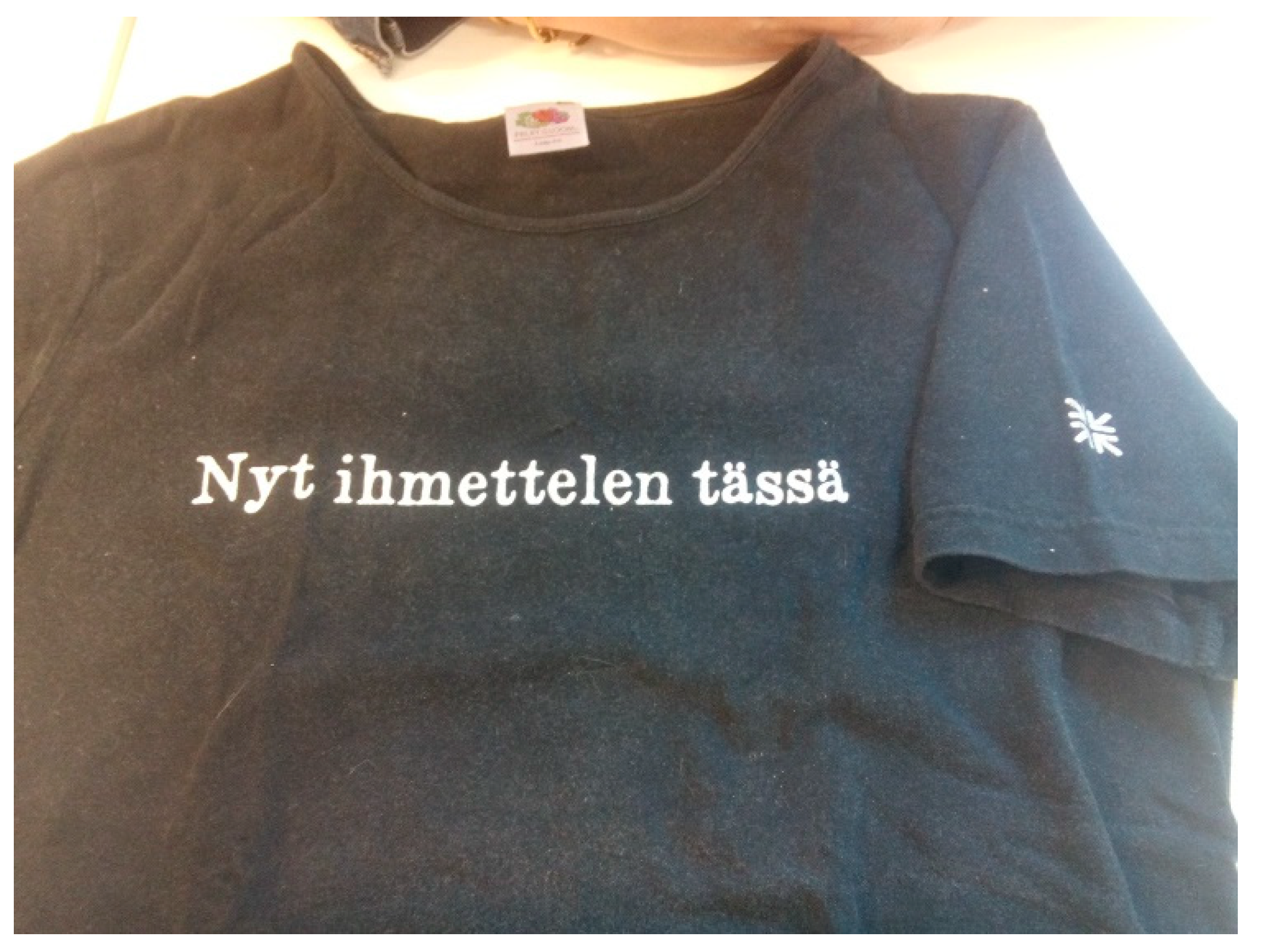
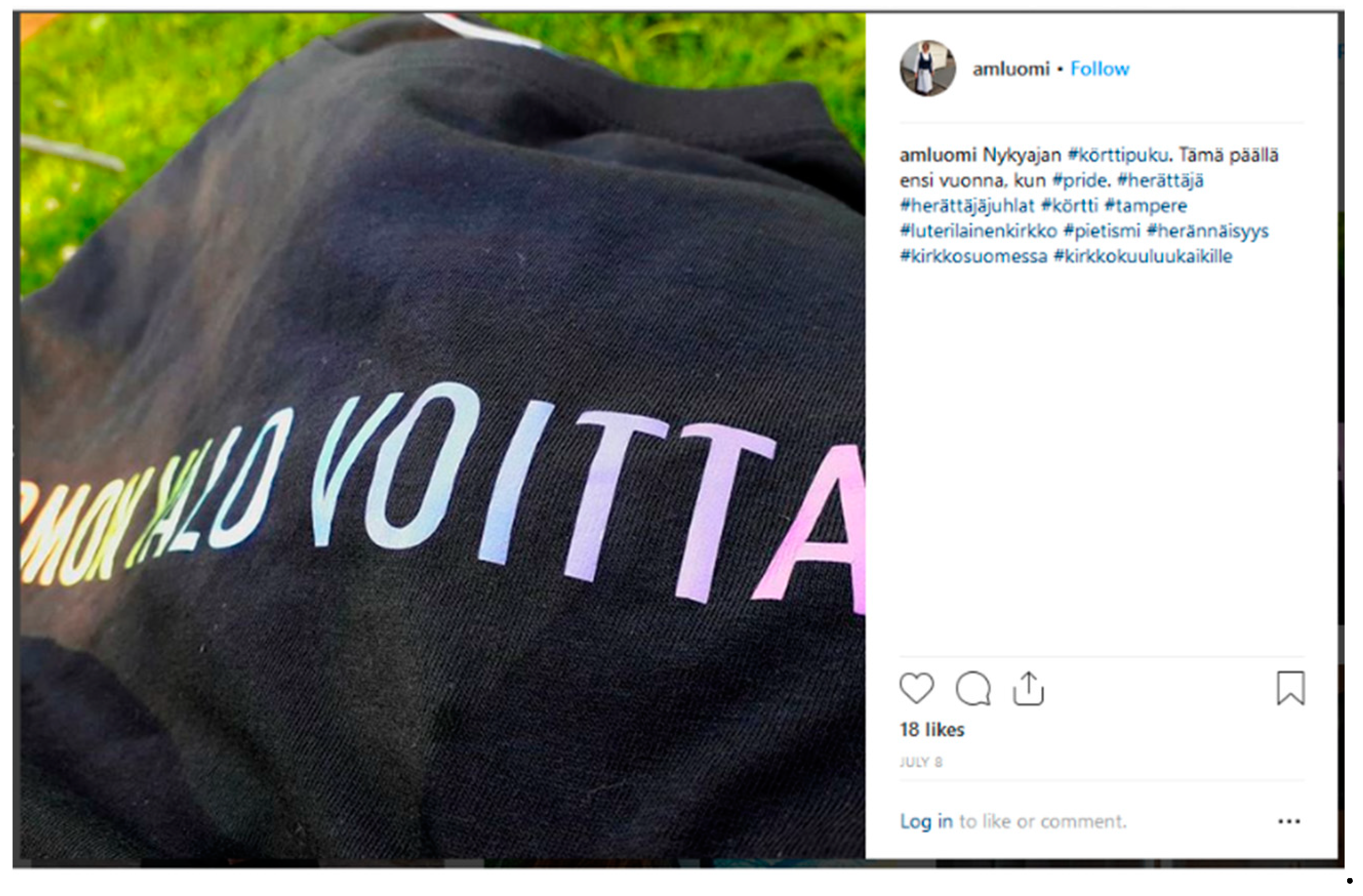

© 2019 by the author. Licensee MDPI, Basel, Switzerland. This article is an open access article distributed under the terms and conditions of the Creative Commons Attribution (CC BY) license (http://creativecommons.org/licenses/by/4.0/).
Share and Cite
Almila, A.-M. From Protestant Peasant Dress to Gay Pride T-Shirt: Transformations in Sartorial Strategy Amongst the körtti Movement in Finland. Religions 2019, 10, 351. https://doi.org/10.3390/rel10060351
Almila A-M. From Protestant Peasant Dress to Gay Pride T-Shirt: Transformations in Sartorial Strategy Amongst the körtti Movement in Finland. Religions. 2019; 10(6):351. https://doi.org/10.3390/rel10060351
Chicago/Turabian StyleAlmila, Anna-Mari. 2019. "From Protestant Peasant Dress to Gay Pride T-Shirt: Transformations in Sartorial Strategy Amongst the körtti Movement in Finland" Religions 10, no. 6: 351. https://doi.org/10.3390/rel10060351
APA StyleAlmila, A.-M. (2019). From Protestant Peasant Dress to Gay Pride T-Shirt: Transformations in Sartorial Strategy Amongst the körtti Movement in Finland. Religions, 10(6), 351. https://doi.org/10.3390/rel10060351



